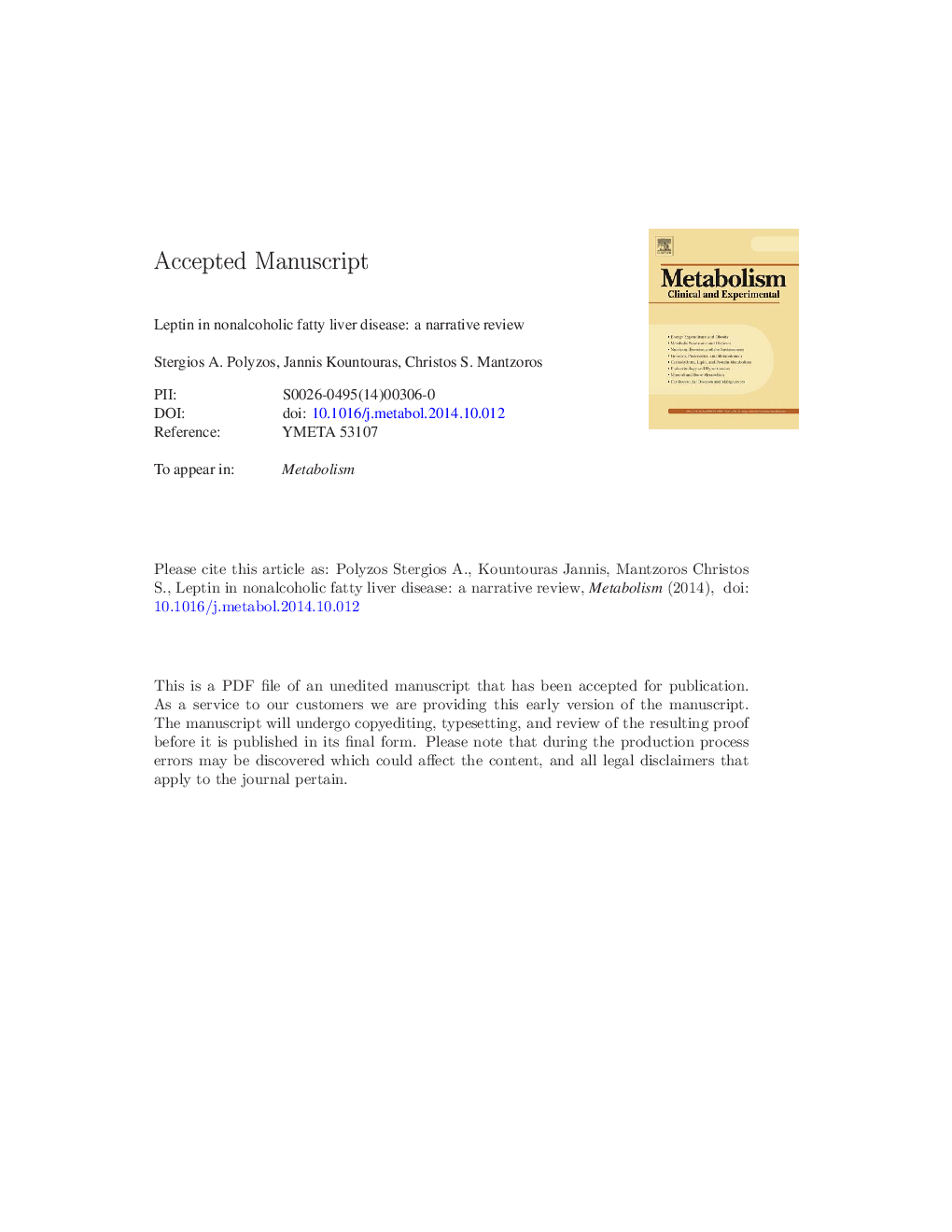| Article ID | Journal | Published Year | Pages | File Type |
|---|---|---|---|---|
| 5903150 | Metabolism | 2015 | 47 Pages |
Abstract
Leptin, the first described adipokine, interplays with hepatic metabolism. The aim of this review was to summarize available data on the association between leptin and nonalcoholic fatty liver disease (NAFLD). Leptin has a potential dual action on NAFLD experimental models, exerting a possible anti-steatotic, but also a proinflammatory and profibrogenic action. Observational clinical studies have shown higher or similar leptin levels between simple steatosis and nonalcoholic steatohepatitis (NASH) compared with controls. Interventional studies showed that circulating leptin diminishes together with body mass index after successful weight loss following lifestyle modifications or bariatric surgery. Studies providing evidence for the effect of other medications on leptin levels in NAFLD populations are limited and of low power. Data from small studies claim that recombinant leptin administration had a possibly beneficial effect on steatosis, but not fibrosis, in NAFLD patients with hypoleptinemia. Although the aforementioned dual leptin action has not yet been validated in humans, leptin administration in NAFLD patients with normoleptinemia or hyperleptinemia is discouraged. Further well-controlled studies in cautiously selected populations are needed to elucidate whether leptin has any prognostic and therapeutic role in NAFLD patients.
Keywords
LEPRSH2-BPNPLANAFLDTNFFOXSREBPChREBPHSCsCHBT2DMCHCSOCSTGFIRSAMPKPI3KNASSVRmTORJanus kinaseHCCMAPKSTATsimple steatosisnonalcoholic steatohepatitisinsulin receptor substrateNonalcoholic fatty liver diseasetransforming growth factorType 2 diabetes mellitussuppressor of cytokine signalingHepatic stellate cellsbody mass indexBMItumor necrosis factorphosphatidylinositol-3 kinaseLeptinSignal transducer and activator of transcriptionInsulin resistanceLeptin resistanceNAFLD activity scoreNash mammalian target of rapamycinchronic hepatitis Bchronic hepatitis Csustained virological responsecarbohydrate response element binding proteinSterol regulatory element-binding proteinforkhead box proteinmitogen-activated protein kinaseSingle nucleotide polymorphismSNPJAKHepatocellular carcinomaSHIPLeptin receptor
Related Topics
Life Sciences
Biochemistry, Genetics and Molecular Biology
Endocrinology
Authors
Stergios A. Polyzos, Jannis Kountouras, Christos S. Mantzoros,
